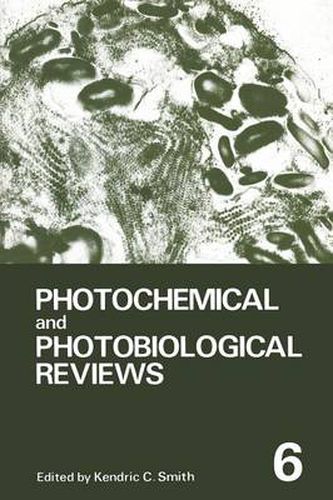Readings Newsletter
Become a Readings Member to make your shopping experience even easier.
Sign in or sign up for free!
You’re not far away from qualifying for FREE standard shipping within Australia
You’ve qualified for FREE standard shipping within Australia
The cart is loading…






This title is printed to order. This book may have been self-published. If so, we cannot guarantee the quality of the content. In the main most books will have gone through the editing process however some may not. We therefore suggest that you be aware of this before ordering this book. If in doubt check either the author or publisher’s details as we are unable to accept any returns unless they are faulty. Please contact us if you have any questions.
The goals of the science of photobiology can be divided into four categories: to develop (I) ways to optimize the beneficial effects of light on man and his environment, (2) methods to protect organisms, including man, from the detrimental effects of light, (3) photochemical tools for use in studies of life processes, and (4) photochemical therapies in medicine. To achieve these goals will require the knowledgeable collaboration of biologists, chemists, engineers, mathematicians, physicians, and physicists; because photobiology is a truly multidisciplinary science. While a multidis ciplinary science is more intellectually demanding, it also has a greater potential for unexpected breakthroughs that can occur when data from several areas of science are integrated into new concepts for theoretical or practical use. Photochemical and Photobiological Reviews continues to provide in depth coverage of the many specialty areas of photobiology. It is hoped that these reviews will provide an important service to the younger scientists in the field and to senior scientists in related fields, because they provide a ready access to the recent literature in the field, and more importantly, they frequently offer a critical evaluation of the direction that the field is taking, or suggest a redirection when appropriate. Since it is important that this review series remain responsive to the needs of photochemists and photobiologists, the Editor would value com ments and suggestions from its readers.
$9.00 standard shipping within Australia
FREE standard shipping within Australia for orders over $100.00
Express & International shipping calculated at checkout
This title is printed to order. This book may have been self-published. If so, we cannot guarantee the quality of the content. In the main most books will have gone through the editing process however some may not. We therefore suggest that you be aware of this before ordering this book. If in doubt check either the author or publisher’s details as we are unable to accept any returns unless they are faulty. Please contact us if you have any questions.
The goals of the science of photobiology can be divided into four categories: to develop (I) ways to optimize the beneficial effects of light on man and his environment, (2) methods to protect organisms, including man, from the detrimental effects of light, (3) photochemical tools for use in studies of life processes, and (4) photochemical therapies in medicine. To achieve these goals will require the knowledgeable collaboration of biologists, chemists, engineers, mathematicians, physicians, and physicists; because photobiology is a truly multidisciplinary science. While a multidis ciplinary science is more intellectually demanding, it also has a greater potential for unexpected breakthroughs that can occur when data from several areas of science are integrated into new concepts for theoretical or practical use. Photochemical and Photobiological Reviews continues to provide in depth coverage of the many specialty areas of photobiology. It is hoped that these reviews will provide an important service to the younger scientists in the field and to senior scientists in related fields, because they provide a ready access to the recent literature in the field, and more importantly, they frequently offer a critical evaluation of the direction that the field is taking, or suggest a redirection when appropriate. Since it is important that this review series remain responsive to the needs of photochemists and photobiologists, the Editor would value com ments and suggestions from its readers.